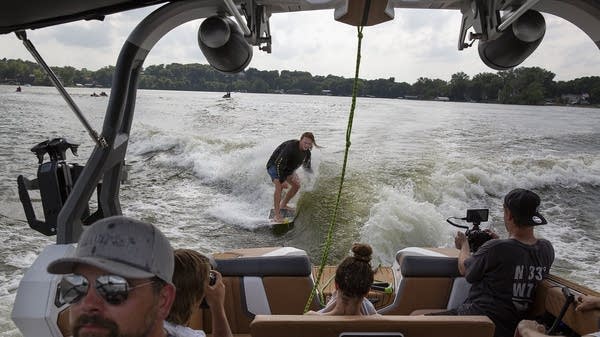Surf's up on Minnesota's hottest lake sport, but not everyone's on board
Wakesurfing might be a blast, but critics say it hurts the environment -- and life on the lake.

Professional wakesurfer Noah Flegel surfs behind a wakeboat on Lake Minnetonka last week.
Christine T. Nguyen | MPR News
Go Deeper.
Create an account or log in to save stories.
Like this?
Thanks for liking this story! We have added it to a list of your favorite stories.


